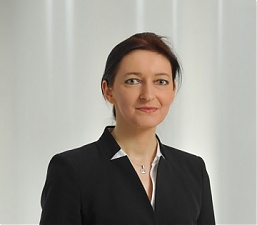Banks, Direct Speech, Financial Services, Latvia
International Internet Magazine. Baltic States news & analytics
Tuesday, 06.01.2026, 23:59
Summer brings a rebound in economic activity: will it last?
 Print version
Print version |
|---|
According to the flash estimate of the Central Statistical Bureau (CSB), in the third quarter of 2020 GDP increased by 6.6% quarter-on-quarter, albeit remaining 3.1% lower than a year ago (adjusted data). A more pronounced recovery was possibly hindered by precautionary attitudes. Even in the circumstances of significantly eased social restrictions, part of the pent-up demand could not be realised (e.g. the Song Celebration and music festivals). Moreover, due to the infection risks, international travel inspired little confidence, and the situation was aggravated by the prospects of a trip ending with an unexpected leave in self-isolation.
Manufacturing gradually bounced back from the COVID-19 shock, with several subsectors reaching their pre-crisis output levels in July–August. A significant positive contribution came from the wood processing sector; this year, it has been less affected by the unfavourable factors of the previous year when the sector was spooked by some Halloween monsters – the bark beetles, declining demand and falling prices.
The opening of borders and the easing of social restrictions allowed, albeit to a limited extent, for the renewal of passenger flows in the third quarter, whereas exports of the good grain harvest might somewhat support the activity of some transport types in the fourth quarter. However, the challenges faced by the transport sector, overall, go far beyond the setbacks caused by the COVID-19 pandemic, and the transport sector will most likely not regain its previous role in the economy in the next few years.
Following the lifting of restrictions, retail trade growth rebounded sharply, even exceeding its pre-crisis turnover in the third quarter. Moreover, according to the CSB data, in September the retail trade turnover at constant prices increased by 5.9% in annual terms. In the fourth quarter, the opening of new trading venues will also help to increase the activity in the sector by catching the consumers' interest and preventing their crowding at the usual shopping places at least temporarily. Moreover, unlike the situation during the first wave of the COVID-19 pandemic, the online commerce potential of businesses that are newcomers in the field has likewise improved.
More detailed data by GDP sector and expenditure component will be available in a month. Meanwhile, the short-term data suggest that, with the economic activity overall increasing and the consumer sentiment and the opportunities to meet the pent-up demand improving, private consumption might have rebounded in the third quarter. At the same time, it has most likely failed to return to its pre-crisis level. Foreign trade has also expanded. However, a more successful investment development is still hindered by the uncertainty surrounding the expected demand amid the global developments of the pandemic, and there is still a lack of clarity regarding the potential support (e.g. the financing of the EC Economic Recovery Fund).
The repeated introduction of the social distancing measures requires the businesses of individual sectors such as the hospitality sector as well as the cultural and recreational services sectors to be particularly creative to continue their activities; however, despite all efforts, their growth will most likely resume later than expected a couple of months ago. The unfavourable daily epidemiological statistics and the precautionary measures that can cause some inconveniences, generate costs or trigger fears to go to public places may have an indirect adverse effect on the development in the areas where direct restrictions are not as stringent as those seen in the spring. The "forced savings" accumulated during the restriction period could be partly transformed into precautionary savings and weigh on the consumption dynamics in the quarters to come.
The "short summer" of growth transforming into "autumn depression and winter apathy"* could, unfortunately, turn out to be more than just lyrics: it is obvious that the search for a silver bullet to disperse the clouds (or the search for the most effective mechanism to contain the pandemic) is still underway in the hope that the Christmas and New Year celebrations are not overshadowed by the pandemic like many other plans in 2020.
*A poem by Juris Kronbergs "Seasonal Disorders"
https://www.youtube.com/watch?v=yW84i5TAt0Y
- 28.01.2022 BONO aims at a billion!
- 25.01.2021 Как банкиры 90-х делили «золотую милю» в Юрмале
- 30.12.2020 Накануне 25-летия Балтийский курс/The Baltic Course уходит с рынка деловых СМИ
- 30.12.2020 On the verge of its 25th anniversary, The Baltic Course leaves business media market
- 30.12.2020 Business Education Plus предлагает анонсы бизнес-обучений в январе-феврале 2021 года
- 30.12.2020 Hotels showing strong interest in providing self-isolation service
- 29.12.2020 В Латвии вводят комендантский час, ЧС продлена до 7 февраля
- 29.12.2020 В Rietumu и в этот раз создали особые праздничные открытки и календари 2021
- 29.12.2020 Latvia to impose curfew, state of emergency to be extended until February 7
- 29.12.2020 18-19 января Наталия Сафонова проводит семинар "Управленческий учет во власти собственника"








 «The Baltic Course» Is Sold and Stays in Business!
«The Baltic Course» Is Sold and Stays in Business!

